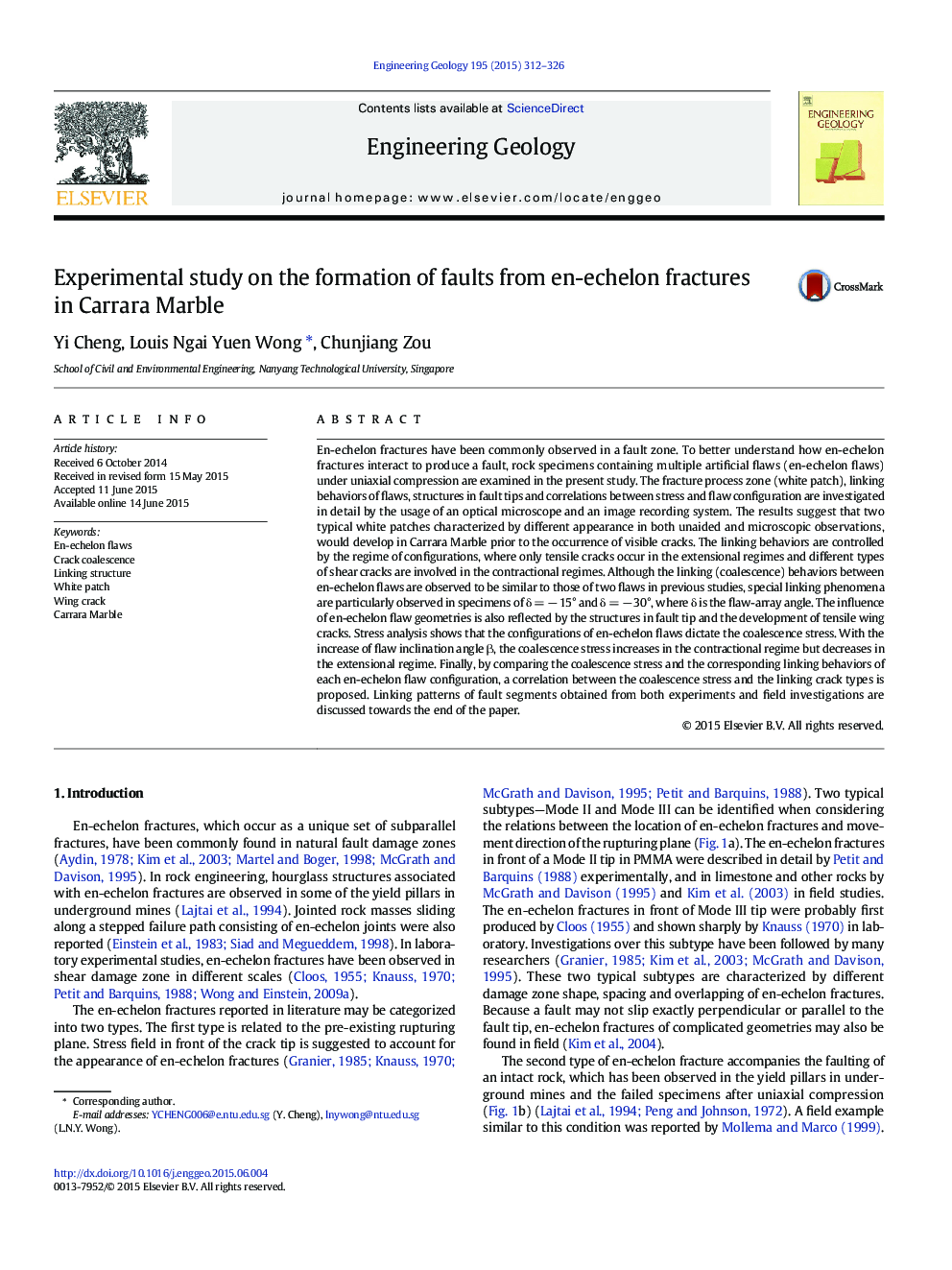| کد مقاله | کد نشریه | سال انتشار | مقاله انگلیسی | نسخه تمام متن |
|---|---|---|---|---|
| 4743306 | 1641790 | 2015 | 15 صفحه PDF | دانلود رایگان |
• Rectangular marble specimens containing en-echelon flaws are uniaxially loaded.
• Two types of white patches are observed to develop in rock bridge.
• Special linking patterns are observed for specimens of δ = − 15° and δ = − 30°.
• Flaw geometry controls geometry of splay fractures, and coalescence stress.
• Experimental results help interpret the field occurrence of en-echelon fractures.
En-echelon fractures have been commonly observed in a fault zone. To better understand how en-echelon fractures interact to produce a fault, rock specimens containing multiple artificial flaws (en-echelon flaws) under uniaxial compression are examined in the present study. The fracture process zone (white patch), linking behaviors of flaws, structures in fault tips and correlations between stress and flaw configuration are investigated in detail by the usage of an optical microscope and an image recording system. The results suggest that two typical white patches characterized by different appearance in both unaided and microscopic observations, would develop in Carrara Marble prior to the occurrence of visible cracks. The linking behaviors are controlled by the regime of configurations, where only tensile cracks occur in the extensional regimes and different types of shear cracks are involved in the contractional regimes. Although the linking (coalescence) behaviors between en-echelon flaws are observed to be similar to those of two flaws in previous studies, special linking phenomena are particularly observed in specimens of δ = − 15° and δ = − 30°, where δ is the flaw-array angle. The influence of en-echelon flaw geometries is also reflected by the structures in fault tip and the development of tensile wing cracks. Stress analysis shows that the configurations of en-echelon flaws dictate the coalescence stress. With the increase of flaw inclination angle β, the coalescence stress increases in the contractional regime but decreases in the extensional regime. Finally, by comparing the coalescence stress and the corresponding linking behaviors of each en-echelon flaw configuration, a correlation between the coalescence stress and the linking crack types is proposed. Linking patterns of fault segments obtained from both experiments and field investigations are discussed towards the end of the paper.
Journal: Engineering Geology - Volume 195, 10 September 2015, Pages 312–326
